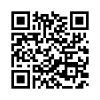THE REPRESENTATION OF FEMALE CHARACTER IN EDGE OF TOMORROW (2014) FILM BASED ON FEMINIST FILM CRITICS
Abstract
(Title: The Representation of Female Character in “Edge of Tomorrow” (2014) Film Based on Feminist Film Critics). This research analyzes the female character in Edge of Tomorrow, Rita Vrataski. This research intends to understand how female character is described in the film and how female character is described according to feminist film critic. The method used is descriptive qualitative method. This research also uses theory character and characterization in film and theory feminist film critic. As the result, Rita is described as a female soldier who has characteristics as committed, brave, assertive, strong, muscular, intelligent and skillful soldier. Even though Rita, as the female character who has man’s characteristics, she still needs help from another male character. Rita character in this film is still passive because the one who finishes the mission in the story is the male character, William Cage. This film proves that male domination still exists in story of film. Thus, the female stereotype has been attached in film and it is difficult to change it.
Keywords: female character ,women in film , feminist film critic
Keywords
Full Text:
PDFReferences
Allen, R. & Gomery, D. (1985). Theory and Practice Film History. United States: Originally Published. Print.
Barry, P. (1955). Beginning Theory. Manchester: Manchester University Press
Dittmar, L. (2017). Images of Women in Film: An Introductory Women’s Studies Course. The Radical Teacher, No.22 (1982), pp 6-9.
Edge of Tomorrow, Dir. Doug Liman. Perf. Tom Cruise, Emily Blunt. Picture, 2014. Film.
Habib, M.A.R. (2005). A History of Literary Criticism. United Kingdom: Blackwell.
Innes, A. S.. (2004). Action Chicks: New Images of Tough Women in Popular Culture. New York: PALGRAVE MACMILLAN.
Knupfer, N. N. and Mclellan, H. (2001). “Descriptive Research Methodologies”. The Association for Educational Communications and technology.
Knight, D. (1995). Women, Subjectivity, and the Rhetoric of Anti-Humanisn in Feminist Film Theory. New Literary History.
McCabe, J. (2004) Feminist Film Studies: Writing the Woman into the Cinema. London and New York: Wallflower
McHugh, A. K. (1999). American Domesticity: From How Manual To Hollywood Melodrama. New York: Oxford University Press.
Merriam Webster Incorporated. (2016). Merriam-webster
Nussabaum C. M. (2000). Women and Human Development. Cambridge: Cambridge University Press.
Levit, N. (1998) The Gender Line: Men, Women and The Law. New York: New York University Press.
Petrie, D. and Boggs, J. (2012) The Art of Watching Film Eight Edition. New York: McGraw-Hill.
Pronger, B. (2017). The Arena of Masculinity: Sports, Homosexuality, and the Meaning of Sex: New York. ST. Martin’s Press.
Smith, S. (1999). “The Image of Women in Film” Feminist Film Theory: A Reader ed. Sue Thornhamr. Edinburg: Edinburg University Press.
Waugh, P., ed. (2006). Literary Theory and Criticism. United States: Oxfor University.
Works of Jacobs P. Cristopher. (2013). Film Theory and Approaches to Criticism, or, What did that movie mean?. University of Dakota.
Wrenn, H. (2010). The Woman in Modernism. ELF Vol.2. 2010.
DOI: https://doi.org/10.21831/diksi.v29i1.33063
Refbacks
- There are currently no refbacks.
Jurnal Diksi is published by Faculty of Languages, Arts, and Culture, Universitas Negeri Yogyakarta. It is licensed under a Creative Commons Attribution-ShareAlike 4.0 International License. Based on a work at http://journal.uny.ac.id/index.php/diksi
Our Journal has been Indexed by:
Diksi Journal is published by the Faculty of Languages and Arts Universitas Negeri Yogyakarta in collaboration with Himpunan Sarjana Kesusasteraan Indonesia (HISKI)
Supervised by:





2.png)










